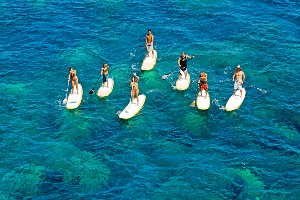
All Images © Naish
He’s right—actually, they’re stand-up paddle boards, which makes sense, since summer is paddling season. On the Islands, the sport’s booming popularity is undeniable, and stand-up paddlers have become a fixture on the seascape. They’re floating around the bays, cruising the coastlines, dropping into waves, and even navigating across open ocean channels.



